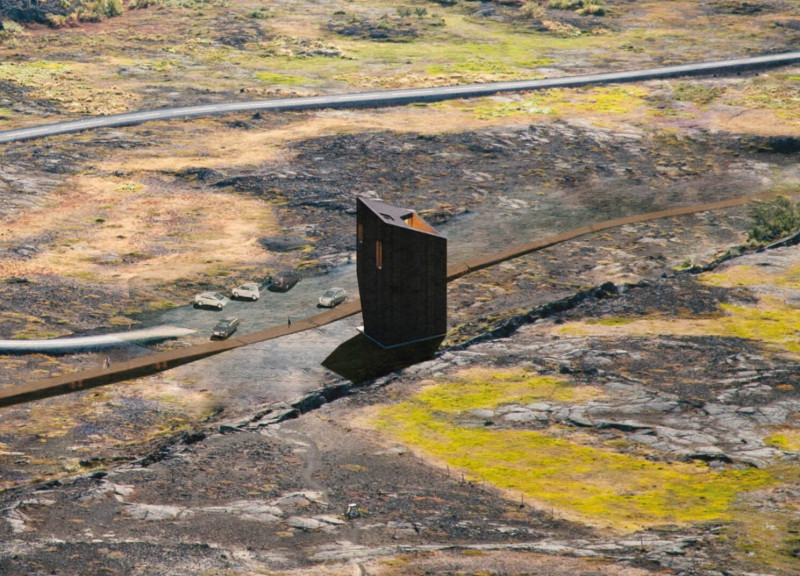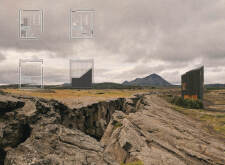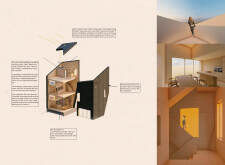5 key facts about this project
The project is a multifunctional watchtower located in a distinctive geographical area that emphasizes minimal interference with the natural environment. It aims to engage visitors and offer practical functionality. The design is compact, reflecting the intimate atmosphere of the nearby caves. The overall concept combines simple construction techniques with both passive and modern technologies, allowing for an effective blend of usability and aesthetics.
Design Concept and Spatial Organization
Careful planning outlines the watchtower's spatial organization to promote interaction among visitors. Inside, a semi-tempered hallway and a tourist information center guide guests throughout the building. Heating is limited to key areas, including the office and café, ensuring comfort while providing protection from the elements. This layout invites individuals to connect with one another and the surrounding landscape.
Material Selection and Performance
Several materials have been chosen strategically for construction, aiming for strength and energy efficiency. Cross-Laminated Timber (CLT) panels serve as the main structural framework, lending necessary support. Wood fiber insulation enhances thermal performance, while the ventilated façade made of fired wooden slats improves air circulation and serves an aesthetic purpose.
Sustainable Energy Integration
The design emphasizes sustainability by integrating renewable energy sources. Solar panels on the roof capture sunlight, while Dabiri wind turbines along the access path contribute to the building’s energy demands. This combination helps to reduce the ecological impact and supports self-sufficiency, highlighting the commitment to environmentally friendly practices.
Building Longevity and Maintenance
Durability is a core focus of the watchtower, with coral-based concrete used for the foundation, providing a stable base for essential systems. The choice of a burned façade not only enhances visual appeal but also minimizes maintenance efforts over time, making the building suitable for its environment.
Large windows frame views of the landscape, inviting natural light into the space. This feature deepens visitors’ connection to their surroundings, fostering an appreciation for the natural beauty while providing a comfortable space for exploration and gathering.






















































